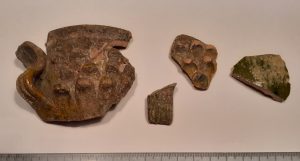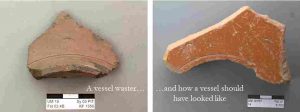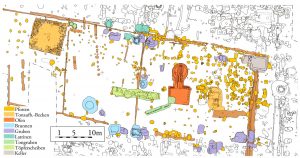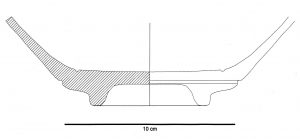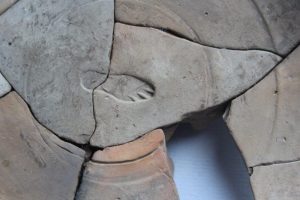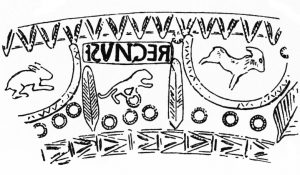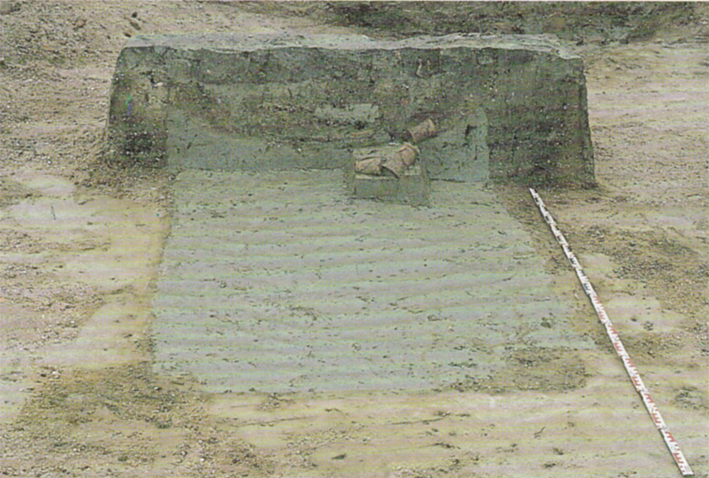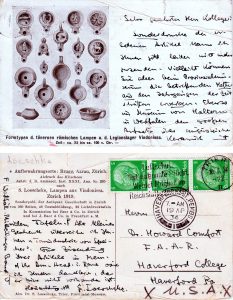
Amongst the correspondence of Howard Comfort, which was entrusted to me by his daughter after his death in 1993, is the postcard reproduced here, and which I thought might be of interest as a brief exchange between familiar ceramologists.
The card reads:
“Sehr geehrter Herr Kollege !
“Sonderdrucke der erbetenen Artikel kann ich Ihnen leider nicht mehr zusenden. Vielleicht können Sie aber beim Provinzialmuseum die betreffenden Hefte aus den Jahrgängen der Zeitschriften erwerben. Ebenso im Museum von Haltern in Westfalen den großen Aufsatz über augusteische Keramik mit vielen Tafeln (Westfäl. Mitteilungen Band V). Als kleines Geschenk überreiche ich Ihnen “Tonindustrie von Speicher”. Für Zusendung Ihres Artikels in Mem. of the Am. Acad. i. Rome wäre ich Ihnen dankbar, da er hier nicht vorhanden ist.
Hochachtungsvoll
S. Loeschcke”
Esteemed Colleague!
Unfortunately, I am no longer able to send you the article you asked for.[1] You may however be able to obtain the relevant volume of the journal from the Provinzialmuseum. Likewise in the Haltern Museum in Westphalia the long essay on Augustan pottery with many plates (Westfälische Mitteilungen vol. V).[2] As a small present I am sending you “The pottery industry of Speicher.”[3] I would be very grateful if you would send me your article in the Memoirs of the American Academy in Rome,[4] as it is not available here.
Yours respectfully,
S. Loeschcke
Readers will note that the postcard itself is an advertisement for Loeschcke’s work, Lampen aus Vindonissa.
The postmarks are interesting. First of all, the German one (Trier 16.4.34) includes the motto “Luftschutz ist nationale Pflicht. Werdet Mitglied im Reichsluftschutzbund” (Air raid protection is a national duty. Become a member of the Imperial Air Raid Federation). Then, since Loeschcke had written a minimal address, without ‘U.S.A.’, the postcard was sent (inventively) to Haverfordwest in Pembrokeshire, Wales, where (only three days later) ‘U.S.A.’ was added, presumably by the postmaster who stamped the card again – and it evidently then reached its destination!
Years later, Howard went to visit Felix Oswald, who lived at Solva, very close to Haverfordwest, and he took photographs of the sign at the entrance to the town and of the town post office.
(I am grateful to Susanne Zabehlicky-Scheffenegger for help in deciphering a few of the more difficult words!)
Philip Kenrick
[1] I do not know what HC was asking for: possibly one of the annual reports of the Trier Museum.
[2] Loeschcke’s major work on ‘Keramische Funde aus Haltern’, in Mitteilungen der Altertumskommission für Westfalen 5 (1909)
[3] ‘Tonindustrie von Speicher und Umgebung’, an article published in Trierische Heimatblätter 1 (1922).
[4] ‘De collectione praecipue epigraphica vasculorum arretinorum apud Academiam Americanam conservata,’ Memoirs of the American Academy in Rome 7 (1929) 177–219.
